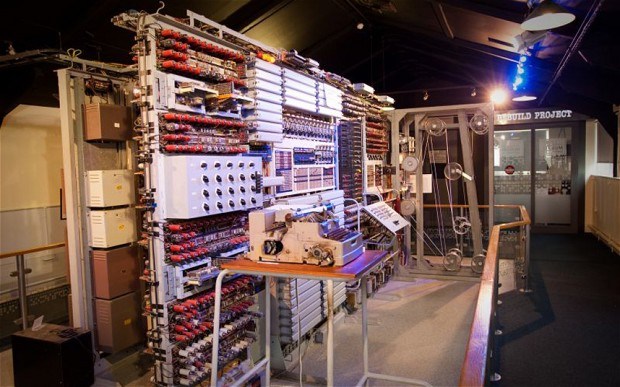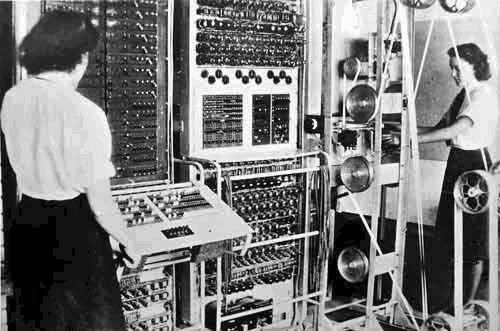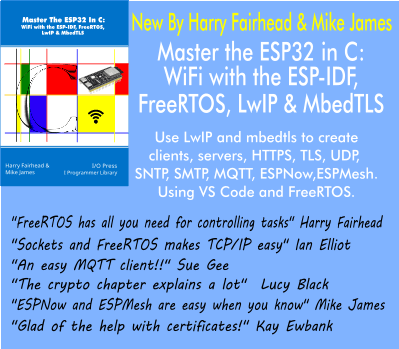| Colossus Commemorated By Postage Stamp |
| Written by Sue Gee | |||
| Sunday, 22 February 2015 | |||
|
The UK's Royal Mail has issued a First Class postage stamp which depicts the code-breaking Colossus computer. It is part of Inventive Britain stamp issue which celebrates eight key inventions of the 20th century in disciplines and applications ranging from materials to medicine.
The stamp's design is based on the banks of thermionic valves that powered the machine's computational logic and the single paper tape crucial to its fast operation. It also has the wording: COLOSSUS world's first electronic digital computer Colossus was built at Bletchley Park, the center of code-breaking activities during World War II to speed up the decryption messages exchanged between Hitler and his generals that used the Lorentz cipher. This code was highly complex and messages could take weeks to decipher by hand. Reading 5000 characters per second, Colossus found the start wheel positions of Lorenz-encrypted messages to enable cryptanalysis. Typically, it took Colossus up to four hours to establish the start wheel positions of messages. By reducing code-breaking times, Colossus enabled the Allies to learn of German war plans almost as quickly as the German generals themselves By the end of the war, 63 million characters of high-grade German messages had been decrypted by the 550 people working on the ten functioning Colossi at Bletchley Park and the knowledge obtained in this way is widely recognised to have shortened the war and saved countless lives. Colossus may have been the world's first large scale electronic computer, but news of its existence was kept secret for 30 years because of the sophistication and sensitivity surrounding the encryption it had helped to break. Its story and that of its designer, Tommy Flowers, only started to emerged in the late 1970s and it took until 2000 for full details of the project to be released. Recent recognition of Colossus is largely due to a reconstruction project initiated by Tony Sale, co-founder of TNMOC, the UK's National Museum of Computing, who decided to rebuild one after snippets of information emerged about the machines in the 1970s and 1980s. Since A working replica of Colossus Mark II is now on permanent display in Block H at Bletchely Park, the hut in which where one of the Colossi operated, and now home to TNMOC.
Colossus was designed by Tommy Flowers who had explored the use of electronics for telephone exchanges in his work at the GPO (General Post Office/) Dollis Hill Research Station. He was initially invited to help out at Bletchley Park by Alan Turing who introduced him, in February 1943, to Max Newman, the person leading the effort to automate the cryptanalysis of the Lorenz cipher. The first machine engineered to compare all possible starting positions of two paper tapes was engineered by Flowers, together with Frank Morrell also from Dollis Hill. Called the Heath Robinson, as it resembled the crazy machines thought up by the renowned British cartoonist of that name, it successfully proved the concept but was far too slow.
Tommy Flowers (1905-1998)
Tommy Flowers realised that the operation could be speeded up by eliminating one of the paper tapes and the result was Colossus Mk1, a machine that occupied the size of a living room (7 ft high by 17 ft wide and 11 ft deep), weighed five tonnes, and used 8kW of power. It incorporated 2,500 valves, originally purposed for use in telephone exchanges. connected by 7 km of wiring. It commenced code-breaking on 5 February 1944.
The issue of the stamp was welcomed by two of the women who operated the Colossus Mk 1. Irene Dixon, WRNS Service Number 88023, said “I’m absolutely thrilled that Royal Mail is recognising the achievement of Tommy Flowers which was kept secret for so long. In December 1943, I was 19 when I arrived at Bletchley wondering what my secret duties would be. For the next 18 months I was a Colossus operator although I dared not speak freely of this until 1995 when I visited Tony Sale and his team to see them rebuilding Colossus. Tommy Flowers’ invention was fantastic and I’m especially proud of him because he was an East Ender like me!” Betty O’Connell,added: I think it’s marvellous that Tommy Flowers is being acknowledged by Royal Mail. It is such a shame that his achievement has been overshadowed because of the secrecy around Colossus for so many decades. If Tony Sale hadn’t been so determined in reconstructing Colossus, I don’t think anyone would know that there were two major ciphers broken at Bletchley Park. So I hope that this stamp will promote the whole story of Colossus and the breaking of Lorenz and help give it its rightful place in history as the pinnacle of code-breaking at Bletchley Park.”
The stamp is also good news for TNMOC where the Colossus Rebuild is now used in a learning programme to inspire students to become the next generation of computer scientists and engineers. Its chairman Tim Reynolds said: “Everyone at the Museum is delighted at the news of the Colossus stamp. We take great pride in playing our part in telling the story of the breaking of the toughest German wartime cipher from intercept to decrypt. Even today the inventiveness of Tommy Flowers’ Colossus is hard to grasp and it is very fitting that it will be represented on a first class stamp seven decades after its development."
Over the years the Royal Mail has issued two commemorative stamps for Alan Turing. One in 1999 and the other in 2012 so codebreaking at Bletchley Park and its role in pioneering computers is now well recognized in this way.
More InformationThe National Museum of Computing Related ArticlesColossus Re-enactment To Mark 70th Anniversary Block H and Colossus Revisited In Virtual Reality Commemorative Stamp for Alan Turing The Imitation Archive A Soundscape of Computer History To be informed about new articles on I Programmer, sign up for our weekly newsletter, subscribe to the RSS feed and follow us on Twitter, Facebook or Linkedin.
Comments
or email your comment to: comments@i-programmer.info <ASIN:0947712364> <ASIN:019284055X> <ASIN:1843543311> |
|||
| Last Updated ( Friday, 12 April 2019 ) |





